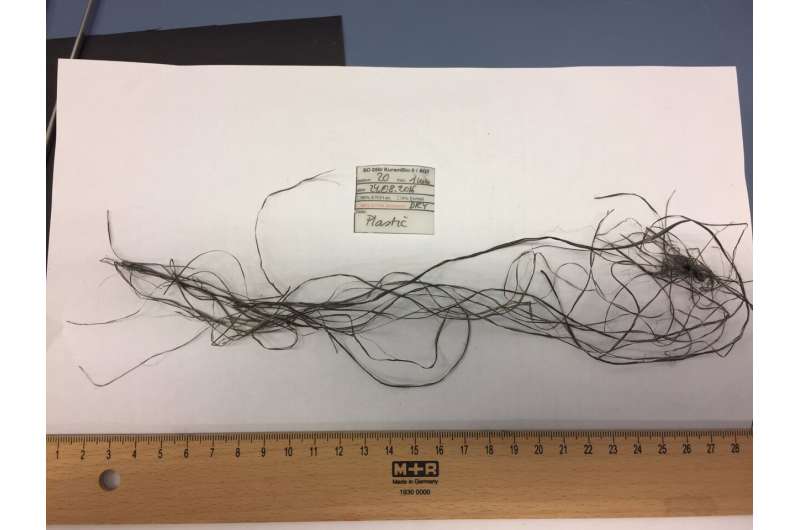
A team of scientists has completed the most comprehensive study of (macro)plastic waste in the Kuril-Kamchatka Trench, a 2,250-kilometer-long deep-sea trench in the northwestern part of the Pacific Ocean.
At least since 2018, when the headlights of a submersible revealed a shopping bag at a depth of 11,000 meters in the Mariana Trench, the presence of plastic waste in the deep sea has been undeniable.
“Even though there is now a growing awareness of the plastic problem, the amount of plastic produced worldwide has increased very significantly over the last 70 years—391 million tons were produced in 2021 alone,” says Dr. Serena Abel, currently a postdoctoral researcher at the University of Basel.
With the help of trawl nets and an epibenthic sled, the scientists sampled 13 stations at depths between 5,134 and 9,582 meters. “To our knowledge, this is the deepest deployment of trawl nets for the study of plastic pollution ever,” explains Brandt. “Our results are alarming: in all of our samples we found (macro) plastic debris—with a total of 111 objects.”
Industrial packaging and material attributable to fishing were the most common waste components in the Kuril-Kamchatka Trench, most likely originating from long-distance transport through the Kuroshio Expansion Current or from regional shipping routes and fisheries. At 33%, strings and cords were the most common debris, followed by plastic fragments (23%) and industrial packaging (11%). Obvious labels in Japanese, Korean, and Spanish were evident on six pieces of plastic waste.